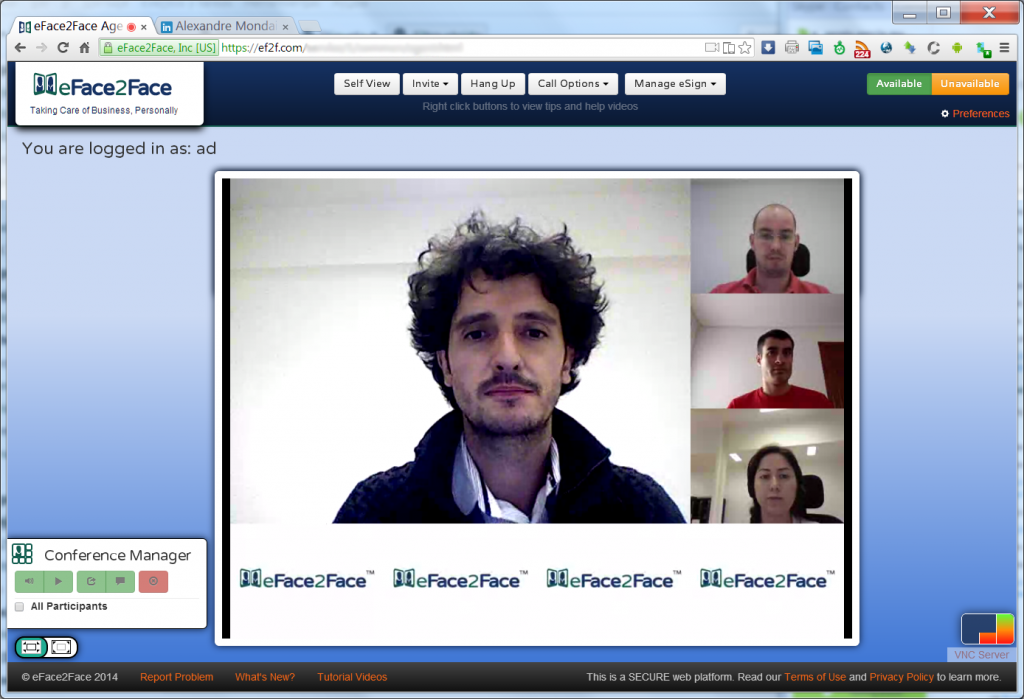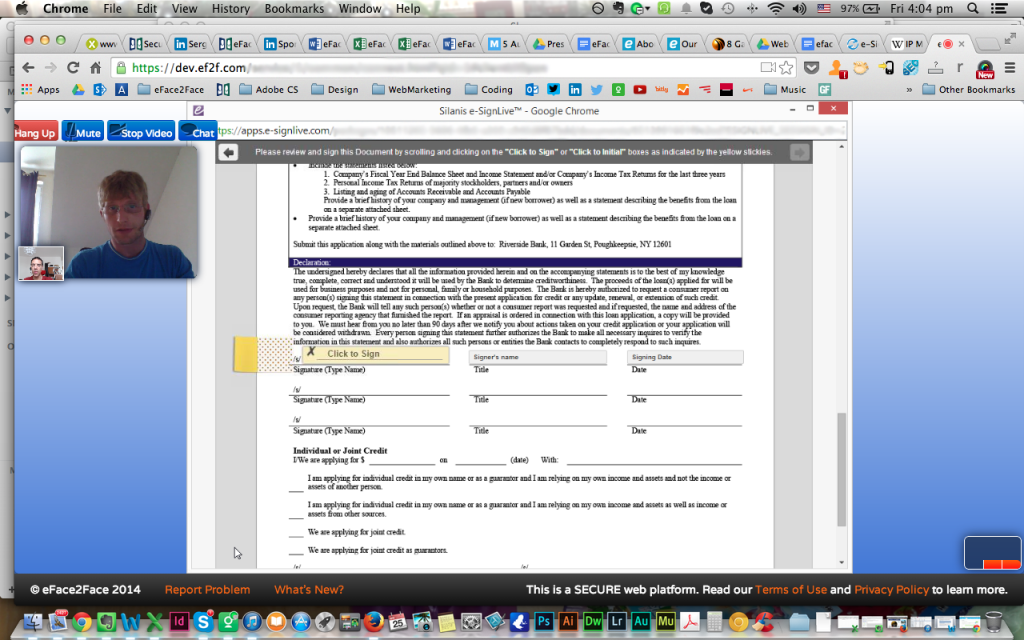 With over a decade of telecom app development experience under his belt, Sergio Garcia Murillo, CTO of eFace2Face, Inc., is an early adopter of the latest telecom technologies. He’s particularly enthusiastic about WebRTC (Web Real Time Communications, part of HTML5). In his current role, Sergio is responsible for the long-term direction of the technology functions of eFace2Face.
With over a decade of telecom app development experience under his belt, Sergio Garcia Murillo, CTO of eFace2Face, Inc., is an early adopter of the latest telecom technologies. He’s particularly enthusiastic about WebRTC (Web Real Time Communications, part of HTML5). In his current role, Sergio is responsible for the long-term direction of the technology functions of eFace2Face.
Based in Madrid, he leads a talented team of developers situated in Spain, the Ukraine, Bulgaria, and the Czech Republic. Working closely with company founder and CEO Dave Patten, who is situated in Florida. Sergio heads up the strategic design, acquisition, management, and implementation of the organization’s technology infrastructure.
Built on the rapidly evolving WebRTC platform, eFace2Face is a complete real-time communication solution that connects customers to businesses using secure high-quality browser-based video and audio, dynamic application and content sharing, and an electronic signature process. Also, as more companies adopt a home-working, or telecommuting approach to employment, eFace2Face is an ideal solution for face-to-face collaboration.
What are some of your current and past telecom app development projects?
Telco has been a major part of my life for over 12 years, most of which I’ve spent developing voice and video communication and streaming services.
My career in telco began in the Telefonica R&D department, where I developed telepresence solutions, as well as an IMS (IP Multimedia Subsystem) videophone integrated into a set-top box for Imagenio. Soon after, I joined an IVR/CRM (Interactive Voice Response / Customer Relationship Management) company before taking on the role of Solution Architect for IMS and IPTV at Ericsson. During this period I designed and coordinated several projects for the top three Spanish telcos – Telefonica, Vodafone, and Orange.
 Telefonica was the last telco I worked for directly; I spent nearly 4 years working for them as an RCS (Rich Communication Suite) Expert. I participated in the development RCS and Join specifications at the GSMA and helped define and deploy the Join service in several Telefonica OBs (Operating Businesses divisions of Telefonica).
Telefonica was the last telco I worked for directly; I spent nearly 4 years working for them as an RCS (Rich Communication Suite) Expert. I participated in the development RCS and Join specifications at the GSMA and helped define and deploy the Join service in several Telefonica OBs (Operating Businesses divisions of Telefonica).
I’ve led several open source TAD (Telecom Application Development) projects, including a wide range of asterisk applications, an 3G-H324M video gateway, and MCU (Multi-point Control Unit). I’ve also spent much of my spare time participating in a number of WebRTC-related drafts of RFCs for the IETF. Some might say I’m a TAD fanatic, I say I’m more than a tad passionate about what I do.
In my current role as CTO at eFace2Face, I’m leveraging the wealth of knowledge I’ve gained in telco as my team and I develop cutting-edge OTT (Over The Top, IP-based) services.
How did you get involved in telecom app development?
By luck (or lack thereof, depending on your perspective). I started working on non-telco Internet services and web portals during the dot-com boom of the late 1990s; when that bubble burst, I had to reinvent myself. The experience I gained during the boom has enabled me to take a much more open-minded and flexible approach to TAD projects than telco-only people tend to take. This proved to be quite valuable when I began developing OTT services.
What are you hoping to get out of TADHack?
My team and I are really looking forward to seeing what kind of innovations the TAD community comes up with. WebRTC and eFace2Face are all about making the web more personal, so naturally the chance to meet our peers face-to-face in our hometown is quite exciting for us.
We’re always on the lookout for talented developers to add to our roster, and I expect there will be no shortage of them at TADHack. I also believe this will be an excellent opportunity for eFace2Face to lay the groundwork for fruitful partnerships and business prospects.
When all is said and done, I really hope to come away from TADHack with new insight, inspiration, and instruments to make the great user experience that eFace2Face delivers even greater.

